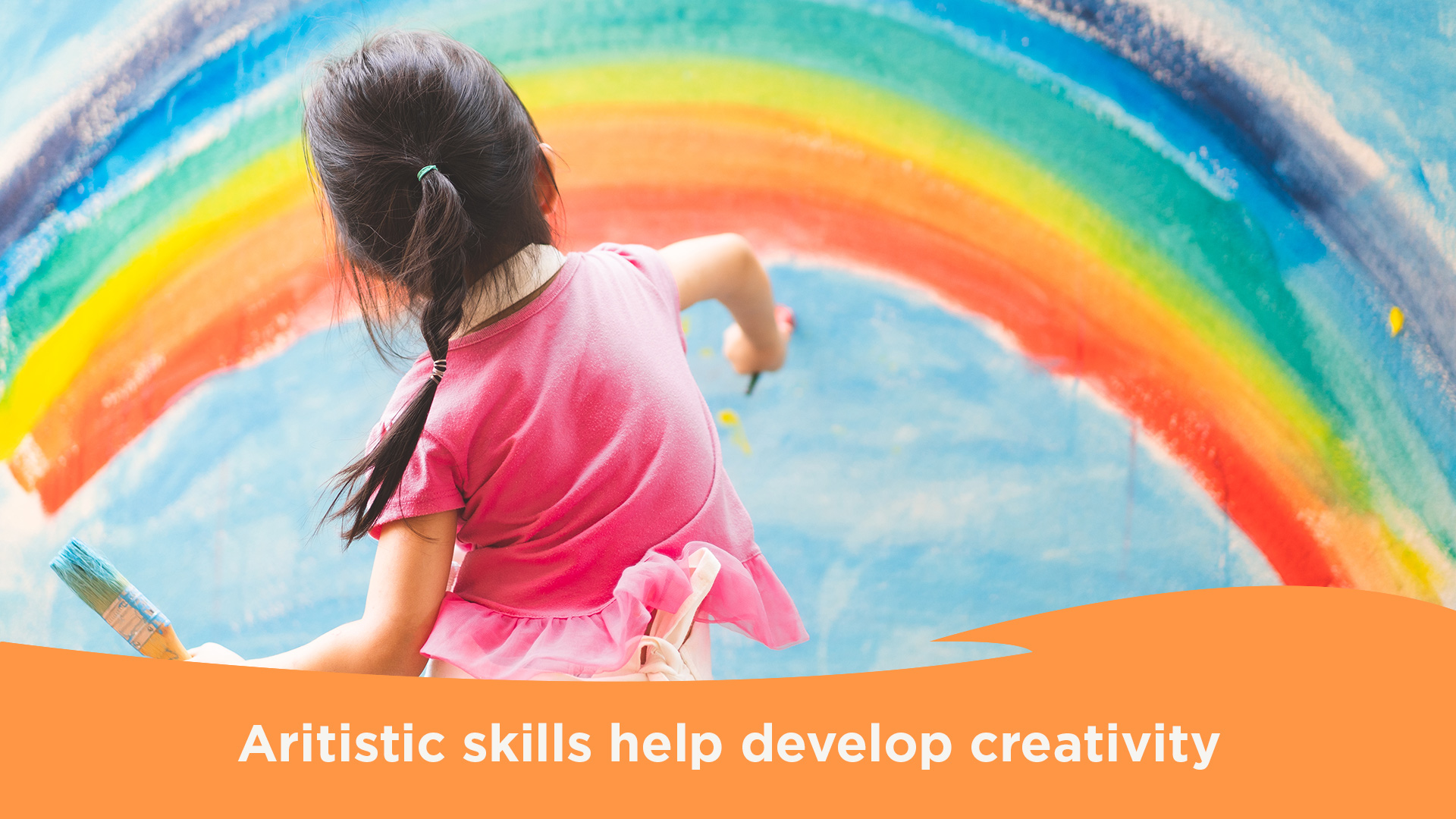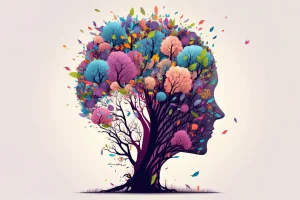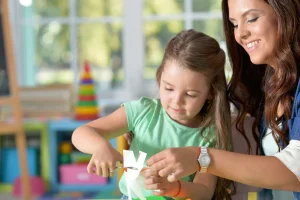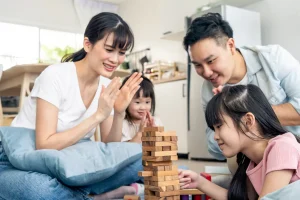Artistic Skills Help Develop Creativity
![]()
- Posted by abrakadoodle.com.sg
- Categories Early childhood development
- Date 13 July 2021

A creative environment is among the best things that can happen to children. It not only helps lay the basic foundation for developing thinking skills required to engage in abstract and analytical thinking, but also helps sharpen visual-spatial understanding, and become familiar with out-of-the-box thinking.
Children also develop early in their lives, the ability to suspend making snap judgments about people and situations, and the advantages of seeing clearly without any preconceived ideas. Art activities will also help children acquire a high degree of autonomy and demonstrate self-discipline in matters regarding school work. Delay gratification, tolerate ambiguity, and demonstrate high levels of self-control are traits that assist children in their social interactions.
By acquiring artistic skills early in life, children learn to understand the benefits of seeing the big picture, make connections to real life experiences leading to a lifetime of creative thinking that helps them face and be able to solve complex problems in the future.
Table of Contents
ToggleBuild on their inherent imagination
Play is a child’s way of learning to think freely and understanding the world around her. It is their way of applying their inherent imagination and flow and to come up with unusual ideas. Building on their original thinking abilities, children are able to develop clarity and a deep enough understanding of concepts. Nurturing their urge to experiment, explore a novel thought, and develop problem solving abilities.
Exposure to artistic skills in an environment which promotes art, playing and learning experiences, allows children to create, design, generate, and spawn new ideas, further developing the creative thinking inherent in young children.
Their idea of learning is through play. For instance, when your child is pretending to be a lion and paints a tiger. Then quickly changing gears, saying she is Captain Hook and now pretending to be Peter Pan. This kind of role playing demonstrates that there are no barriers in a child’s mind. She can imagine whatever she wants to imagine. The biggest benefit of art is it helps make learning easy, fun and engaging.
Helping keep young minds open
Participating in art programs and practicing artistic skills helps rewire and build neural networks in the brain in a way that will take a child’s thinking capabilities to a higher level. Become more intuitive about how she will approach problems later at school and in life.
Art programs help children retain their flexibility in finding different ways of looking at things. Making learning much more playful, effective and helps children understand how an open mind goes about making things happen. It is a big win-win for both the brain and the mind of a child.
Artistic skills help loosen a child’s mind, let go of assumptions, get comfortable with ambiguity and be able to connect the dots freely and playfully. As a matter of fact, the principles learnt and followed and challenges faced when making a painting are exactly the same as those involved in planning and building a career path for a bright future.
Colour is a life-long teacher
When a child is focused on developing her artistic skills through an art program, she will learn about colours and understand them in a more meaningful way. Art classes also help your child to develop vocabulary and build on her communication skills, and increase her already developed sense of observation.
Parents can use a variety of practical experiences to help their preschooler gain confidence, a keen understanding of the gradations of colour that may be missed if left to a computer program or flashcards to do the teaching.
Remember, asking open-ended questions will teach a child to explore the colours she sees around her and not just imagine them. After visiting a grocery section in a supermarket for instance, ask your child about all the fruits and veggies she can think of that are in the green family? Pose a question, “What if all animals, houses, streets, and buildings were green, too?”
Take a walk in the park
During a nature walk, help the child collect different kinds of leaves in various shades of green. Talk about how colours also have names and like humans, belong to a family. Point out to your child about the variations of colour in leaves when they are in the shade and in the sunlight. Be practical as well, by accurately describing the many hues of green by showing an emerald, moss, mint, fern, and avocado.
Experiment with colour
Discovering new shades and tints is exciting when you are a child. It will be like magic for children to watch an altogether new colour emerge when you mix yellow and red. To change the shade of a new colour, add a little white paint, slowly. See the colour soften and then add drops of black and see how different shades of orange emerge.
For a fun wet-weather activity, fill one plastic sprayer with a yellow food colouring and fill another one with red food colouring and water. Let your child play and mix the two by spraying on a paper napkin or a piece of cloth to see the colours blend and create a shade of orange.
Watch a sunset
Share the wonderful experience of watching the sun go down with your child. The sky is filled with changing hues and bursting into different colours of varying intensities. Engage in a conversation. Talking about colours in a wide range of situations increases a child’s awareness of the environment and the ability to make connections.
These conversations with your child will help her learn new words and make new connections to real things. Internalizing a deeper understanding of a concept that even adults may understand only superficially. As the child learns to think deeper about colour and experiences it in real-time, she will gain new perspectives about her rapidly expanding world.
Developing artistic skills
Long before your child learns to read and write, exposure to the art programs will enable her to express her thoughts clearly and learn to share her experiences vividly. First through images she creates and then she learns once again, when she is sharing and explaining what she has created.
Another transforming experience takes place in a child’s mind when she is involved in creating a variety of artwork, including abstract art. Your child learns to see things through a lens that is uniquely her own. She also learns that there is no right or wrong way to create. And will soon become conscious of the fact that people are individuals and can express their ideas and emotions in their own ways.
Nurture these qualities
You, as a parent, can accelerate the development of creative ability by exercising it in the same way they learn to master memorising names or learning a language. Through collaboration, practice and involving your child in art activities earnestly.
Drawing & painting together While children may not be in a position to recreate realistic drawings or painting, there is nothing to stop them from enjoying and delighting in creating them. Naming their doodles and paintings, narrating stories to express what they mean. You as a parent need to encourage this in your child by participating in these activities. In fact, enjoy doing this as much as your child does.
Develop critical thinking skills When you are outdoors and walking around the park, help your child gather dried grass, leaves, and twigs. Tell her why you are doing it, build up her curiosity and excitement. While you are at it, collect some earth in a bag as well.
Once home, mix them all up and shape it into a bird’s nest. Set the mixture in the sun to bake. Get your child to roll tiny bird eggs out of some dough and colour the eggs. Lay them out for display in the nest. Don’t bother about getting the science right just as yet. All that matters is setting up the stage to pose questions that require critical thinking.
Show off your child’s work Create an art gallery at home. Display your child’s own artwork at the eye level of the child, so that she gets to see them. Talk about her art the way you might do if you were at an art museum. Your child will pick up new words, construct short sentences and very soon, your child would have learnt to do the same, the next time her friends come to visit.
Variety is the spice of art Like stated earlier, when you collaborate and also work together with your child, you will be bonding in a new way. It will not be just her who is involved in learning, but you as well. So think of changing the materials you use to paint. For instance, instead of using a paint brush, you can think of a toothbrush or a sponge, or just your fingers. Instead of paper, why not use your old T-shirt and get your child to paint on her old one!
While you articulate about your own process as you create, be sure to also point out the features of your child’s process. It will not sound like you are making judgments when you point out but sharing what you notice: “ I see you like a spiral in your clouds. Is there a storm brewing?”
Creative Problem Solving
At abrakadoodle, children learn the fundamental process of discovering and imagining, problem solving and thinking, and develop their own unique creative expressions. We believe developing artistic skills is important and as critical as fresh air and sunshine is to a child’s health, growth and well-being. As a parent, you are your child’s most important teacher. The conversations you have will help your child develop thinking skills that will last an entire lifetime.
You may also like

The Impact Of Colour On A Child’s Development

How Collage-making Activity Helps A Child To Think Creatively

